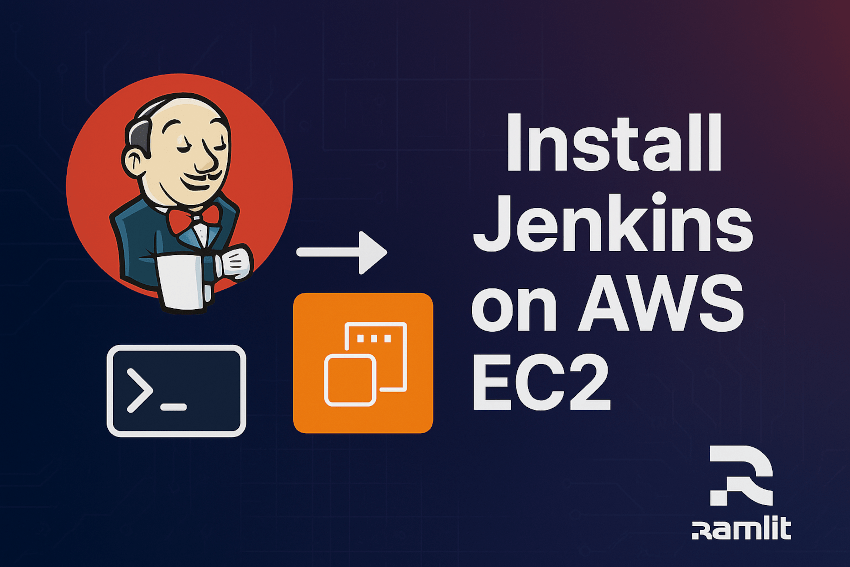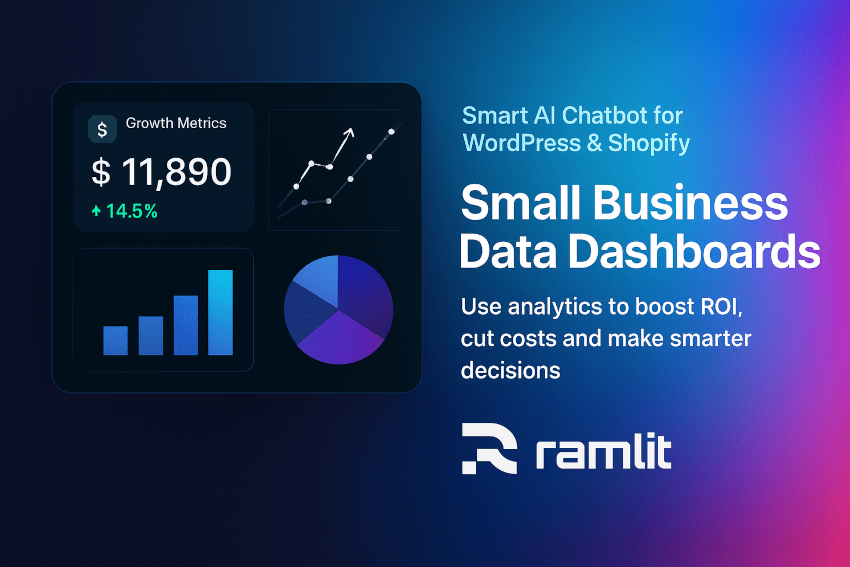✨ Introduction
If you're a DevOps engineer or cloud practitioner in 2025, chances are Jenkins is part of your CI/CD toolbox. But setting it up—especially on AWS EC2—can feel like one of those tasks that should be simple... but quickly turns into a rabbit hole of outdated tutorials and frustrating permission errors.
Let’s fix that.
In this guide, you’ll learn exactly how to launch a secure, production-ready Jenkins instance on AWS EC2 — with zero fluff and no skipped steps.
Whether you're building a personal automation pipeline or deploying across teams, this walkthrough will help you go from EC2 launch to Jenkins dashboard in under 30 minutes.
🚀 What is Jenkins and Why Install It on EC2?
Jenkins at a Glance
Jenkins is one of the most powerful open-source automation servers. It helps developers build, test, and deploy code automatically. Think of it as your CI/CD command center.
Why Use AWS EC2 for Jenkins?
- Full control over OS, ports, and access
- Scalable compute with EC2 instance types
- VPC and security group integration for secure deployments
- Ideal for DevOps pros who want flexibility over convenience
🛠️ Prerequisites Before You Begin
Make sure you’ve got:
- ✅ An AWS account with EC2 launch permissions
- ✅ A registered domain (optional but useful)
- ✅ Basic knowledge of SSH and Linux terminal
- ✅ A security group that allows SSH (port 22) and HTTP (port 8080 or 80)
We’ll use Amazon Linux 2023 (AL2023) in this guide, but you can adapt for Ubuntu if preferred.
📦 Step-by-Step: Installing Jenkins on AWS EC2
🔹 Step 1: Launch an EC2 Instance
-
Go to your AWS EC2 Dashboard
-
Click Launch Instance
-
Set the following:
-
AMI: Amazon Linux 2023 (or Ubuntu 22.04 LTS)
-
Instance type: t2.medium or t3.medium (min 2 vCPUs recommended)
-
Key pair: Create or select an existing one
-
Security group: Allow inbound on:
- Port 22 (SSH)
- Port 8080 (Jenkins default)
-
-
Click Launch
🔹 Step 2: SSH Into Your Instance
Replace your-key.pem and public-ip with your actual values:
chmod 400 your-key.pem
ssh -i your-key.pem ec2-user@your-ec2-public-ip
🔹 Step 3: Install Java (Required for Jenkins)
Jenkins runs on Java. On Amazon Linux:
sudo yum update -y
sudo amazon-linux-extras enable corretto8
sudo yum install java-1.8.0-amazon-corretto -y
Verify with:
java -version
🔹 Step 4: Add Jenkins Repo and Install Jenkins
sudo wget -O /etc/yum.repos.d/jenkins.repo \
https://pkg.jenkins.io/redhat-stable/jenkins.repo
sudo rpm --import https://pkg.jenkins.io/redhat-stable/jenkins.io-2023.key
sudo yum upgrade
sudo yum install jenkins -y
🔹 Step 5: Start and Enable Jenkins
sudo systemctl start jenkins
sudo systemctl enable jenkins
Check status:
sudo systemctl status jenkins
🔹 Step 6: Allow Jenkins Port (8080) in EC2
If you didn’t allow port 8080 when setting up the instance:
-
Go to EC2 > Security Groups > Inbound Rules
-
Add a new rule:
- Type: Custom TCP
- Port: 8080
- Source: Anywhere or your IP
🔹 Step 7: Access Jenkins via Browser
Go to:
http://your-ec2-public-ip:8080
You’ll see the “Unlock Jenkins” screen.
Get your initial password:
sudo cat /var/lib/jenkins/secrets/initialAdminPassword
Paste that into the browser and hit Continue.
🔹 Step 8: Install Recommended Plugins
Let Jenkins install the default recommended plugins. This takes a few minutes.
Once done, set up:
- Admin username/password
- Instance configuration (leave default)
- Jenkins URL
Click Save and Finish. Jenkins is now ready to use!
🛡️ Optional: Secure Jenkins with NGINX and SSL (Bonus)
If you're planning to run this in production, expose Jenkins on port 80 or 443 with a domain.
Install NGINX:
sudo yum install nginx -y
sudo systemctl start nginx
sudo systemctl enable nginx
Create a Reverse Proxy:
Edit NGINX config:
sudo nano /etc/nginx/conf.d/jenkins.conf
Add:
server {
listen 80;
server_name yourdomain.com;
location / {
proxy_pass http://127.0.0.1:8080;
proxy_set_header Host $host;
proxy_set_header X-Real-IP $remote_addr;
}
}
Restart NGINX:
sudo systemctl restart nginx
Optional: Add Free SSL with Let's Encrypt
Use Certbot:
sudo yum install epel-release -y
sudo yum install certbot python3-certbot-nginx -y
sudo certbot --nginx
Follow the prompts to install a free SSL certificate.
🧠 CI/CD Use Cases You Can Now Build
Now that Jenkins is up and running, here’s what you can automate:
- Build and test pipelines for GitHub or Bitbucket
- Docker image builds and container deployments
- Multi-stage deployments with Kubernetes or ECS
- Slack/email alerts for failed builds
- Scheduled jobs (nightly builds, code checks, etc.)
📌 Troubleshooting Tips
🔁 Jenkins Not Starting?
Check the logs:
sudo journalctl -u jenkins
🔒 Can't Access Port 8080?
Double-check your security group and local firewall.
🧱 Java Errors?
Ensure the right version is installed and environment variables are set.
⚡ Quick Takeaways
- 🔧 Launch EC2 with port 8080 open
- ☕ Install Java 8 (or 11) before Jenkins
- 🧱 Use
systemctlto start and enable Jenkins - 🌐 Set up NGINX + domain for secure access
- 🔐 Add SSL for production environments
- ⚙️ Use Jenkins for full CI/CD automation on AWS
📣 Call to Action
You’ve just unlocked the power of Jenkins on AWS EC2.
If you’re serious about building robust, automated DevOps pipelines—don’t stop here.
🚀 Let our cloud engineers at Ramlit Limited help you:
- Optimize Jenkins for production
- Integrate Docker, GitHub Actions, or Kubernetes
- Monitor, secure, and scale your CI/CD workflows
👉 Contact Us Now for a free 15-minute consultation.
❓ FAQ: Installing Jenkins on AWS EC2
Q1: What instance size should I choose for Jenkins?
For light CI/CD usage, t2.medium is fine. For active pipelines or multiple agents, consider t3.large or higher.
Q2: Can I use Ubuntu instead of Amazon Linux?
Absolutely. Just adjust the package manager (use apt instead of yum) and install Java accordingly.
Q3: Is port 8080 safe for production?
No. Expose Jenkins via a reverse proxy (like NGINX) and secure with SSL for production use.
Q4: Can Jenkins run Docker builds on EC2?
Yes, just install Docker on the EC2 instance and add the Jenkins user to the Docker group.
Q5: Is Jenkins still relevant in 2025?
100%. Jenkins remains a flexible, powerful CI/CD tool—especially for teams that need deep customization or on-prem/cloud hybrid setups.




